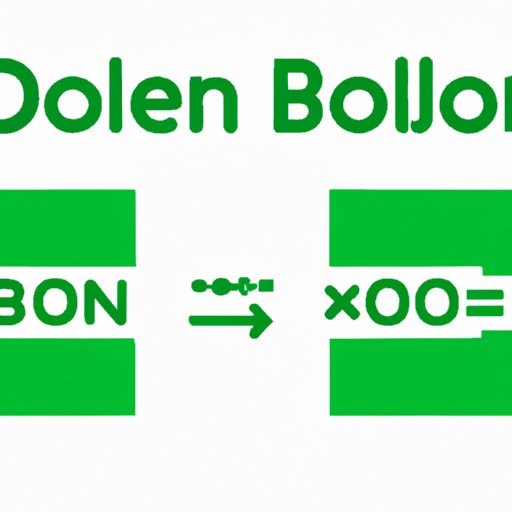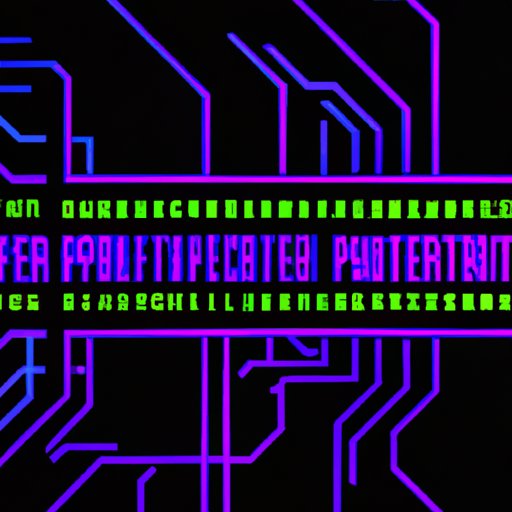Understanding Boolean: A Comprehensive Guide to Digital Logic
Boolean logic is a fundamental concept in computer science and digital technology. It forms the basis of all digital circuits and is used in programming languages to create complex algorithms and decision-making systems. Understanding Boolean is essential for anyone looking to pursue a career in computer science or any digital field. In this article, we will provide you with a complete guide to the concept of Boolean, from basics to advanced techniques to help you master this vital programming concept.
Understanding Boolean: The Foundation of Digital Logic
Boolean logic originated in the mid-19th century, when mathematician George Boole developed a system of logical algebra. Boole’s ideas were later used to develop the foundations of modern computer technology. Boolean logic is a system of logical algebra that uses two values, “True” and “False” to represent all logical operations.
Boolean values work on the principle of binary logic, whereby every operation can only have two possible outcomes – True or False. In digital technology, these values are represented by the binary digits of 0 and 1. The Boolean values of True and False can be used to create complex logical operations using Boolean operators.
Boolean Logic is the basis of all digital technology, from simple calculators to complex supercomputers. Every digital device whether mobile phones, laptops, or desktop computers, rely on Boolean logic to perform their functions.
The Power of True or False: A Comprehensive Guide to Boolean Logic
Boolean logic is an essential tool for programming and is used in many different programming languages. In programming, Boolean values are used to represent binary logic. They are used to create complex decision-making systems, program loops, and establish program flow control.
There are three basic operators in Boolean Logic: AND, OR, and NOT. The AND operator only returns true when both operands evaluate to true. The OR operator returns true when one or both operands evaluate to true. The NOT operator returns the Boolean opposite of its operand. Understanding these operators is essential for effective programming and can help you create more efficient programs.
Boolean expressions are a crucial component of programming, and they are used to compare two Boolean values. In programming, Boolean expressions must evaluate to either true or false, and they are used to control program flow, implement decision-making, and establish program logic. Many programming languages, including Java, Python, and C++, have built-in support for Boolean expressions, making them an essential part of the programmer’s toolkit.

Decoding Booleans: Everything You Need to Know About This Vital Programming Concept
When programming, it is essential to understand how Boolean expressions work. A Boolean expression is a mathematical statement that evaluates to either true or false. Syntax is the set of rules that govern the structure and use of Boolean expressions in programming languages, and understanding these rules is essential for effective programming.
Compared to other programming constructs such as if-else statements, Booleans are simpler and more concise. However, it is essential to understand the syntax of Boolean expressions to avoid common programming pitfalls such as infinite loops or unexpected program flow. One of the main advantages of Boolean logic is that it can be used to create complex decision-making structures by combining different Boolean expressions with logical operators.
Boolean Logic: A Beginner’s Guide to Understanding Its Role in the World of Programming
Boolean operators are used to representing logical operations in programming and are a crucial tool for creating complex systems that rely on decision-making. Understanding Boolean operators is essential for software development, web development, and any other area that requires programming expertise. Some of the most common Boolean operators used in programming include AND, OR, and NOT.
Boolean logic is also used to control program flow through decision-making. This is achieved using statements such as if-else statements or switch statements, which evaluate Boolean expressions and respond accordingly. By using Boolean logic to control program flow, programmers can create complex algorithms and decision-making systems that can provide more accurate and efficient results.
The Basics of Boolean: What Every Programmer Needs to Know
When it comes to programming with Boolean logic, there are certain basic rules that every programmer should know. These rules include understanding Boolean precedence, the order in which different Boolean operators are evaluated, and the correct use of parentheses to clarify logical order.
Boolean precedence is the order in which different Boolean operators are evaluated. Depending on the operator, some expressions may be evaluated before others. It is essential to know the order of operations in Boolean expressions to avoid unexpected outcomes or errors in program flow.
Another important aspect of programming with Boolean logic is knowing how to avoid common errors. One of the most common errors that programmers make is forgetting to account for operator precedence, resulting in incorrect program flow or logical errors in output. By understanding and applying basic Boolean rules, programmers can create more robust and error-free code.
Boolean Demystified: A Simple Guide to Mastering Programming
To write effective Boolean expressions, it is essential to follow some best practices. One of the most important practices is using parentheses to clarify logical order. Using parentheses can help avoid errors caused by operator precedence, and it can also improve program readability.
When working with complex Boolean expressions, it is important to understand how to debug common errors. Debugging Boolean expressions requires understanding how operators work, and how to use logical structures to create efficient and effective programs. By following best practices and using the right tools, programmers can master Boolean logic and create powerful programs that deliver real-world benefits.
Why Boolean Matters in Computer Science: A Deep Dive into Its Applications
Aside from programming, Boolean logic has numerous applications in other areas of computer science. For example, Boolean logic is used in electronic circuit design to create complex computer hardware systems such as CPUs and GPUs. Boolean logic is also used in artificial intelligence and machine learning to create intelligent systems that can learn from data and make complex decisions.
In the future, Boolean logic is likely to become even more important in the digital world. As technology continues to evolve, the demand for more complex and sophisticated systems will grow. By mastering Boolean logic, programmers can stay ahead of the curve and create innovative solutions that drive the future of digital technology.
Conclusion
In conclusion, Boolean logic is a fundamental concept in digital technology, and understanding it is essential for anyone looking to pursue a career in computer science or any digital field. By studying the basics of Boolean logic, learning how to use Boolean operators, and following best practices in programming, you can master this vital programming concept and create powerful programs that deliver real-world benefits. So, don’t hesitate to practice and engage with the concept of Boolean.
